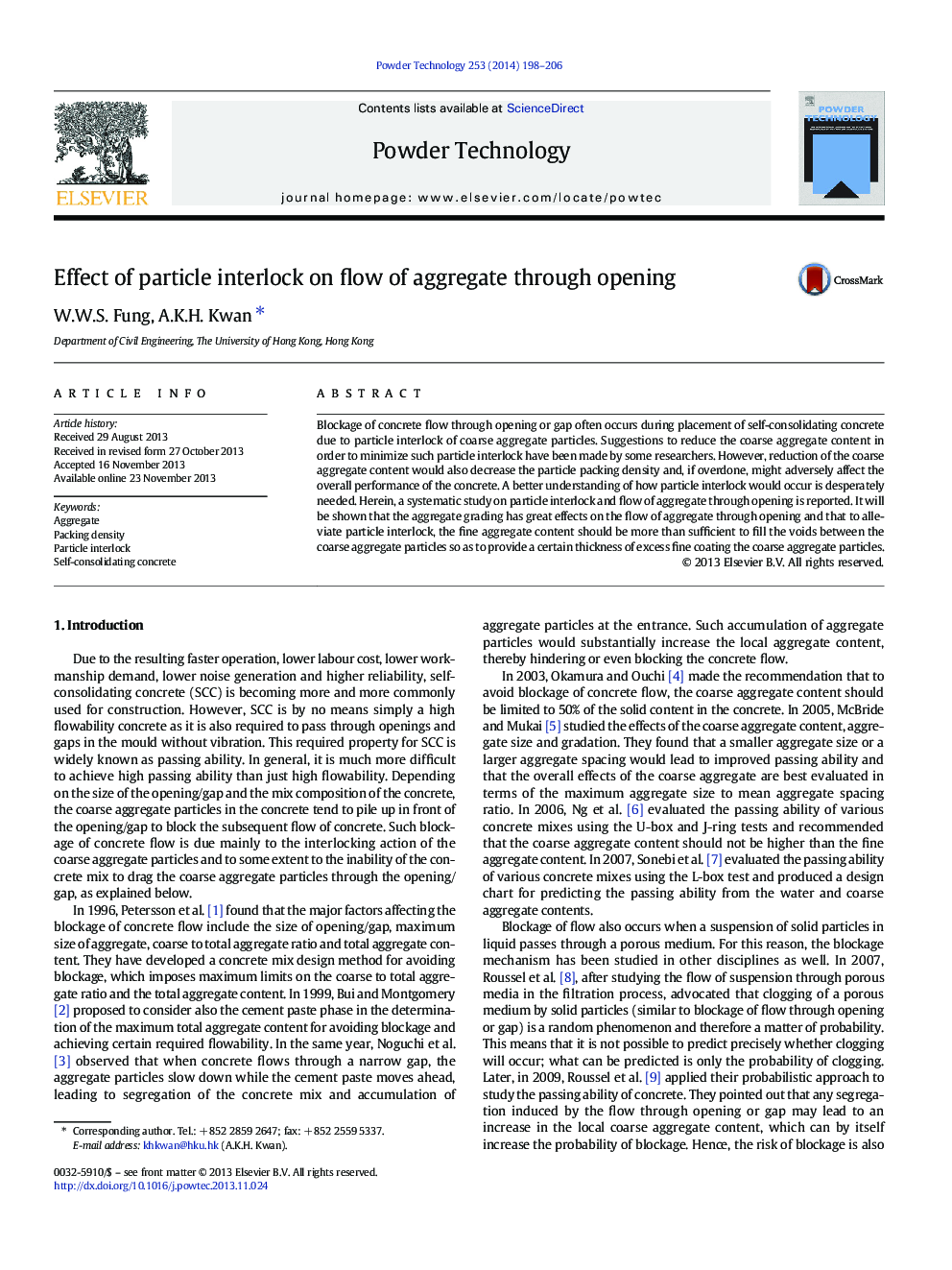| Article ID | Journal | Published Year | Pages | File Type |
|---|---|---|---|---|
| 236451 | Powder Technology | 2014 | 9 Pages |
•Blockage of concrete flow through opening often occurs due to particle interlock.•Such particle interlock was studied from flow rate of aggregate through opening.•Provision of excess fine coating coarse particles alleviates particle interlock.
Blockage of concrete flow through opening or gap often occurs during placement of self-consolidating concrete due to particle interlock of coarse aggregate particles. Suggestions to reduce the coarse aggregate content in order to minimize such particle interlock have been made by some researchers. However, reduction of the coarse aggregate content would also decrease the particle packing density and, if overdone, might adversely affect the overall performance of the concrete. A better understanding of how particle interlock would occur is desperately needed. Herein, a systematic study on particle interlock and flow of aggregate through opening is reported. It will be shown that the aggregate grading has great effects on the flow of aggregate through opening and that to alleviate particle interlock, the fine aggregate content should be more than sufficient to fill the voids between the coarse aggregate particles so as to provide a certain thickness of excess fine coating the coarse aggregate particles.
Graphical abstractSelf-consolidating concrete needs to have good passing ability but the particle interlocking action of coarse aggregate particles tends to cause blockage of concrete flow through openings. This research shows that to alleviate particle interlock, the fine aggregate content should be high enough to provide a certain thickness of excess fine coating the coarse aggregate particles, as illustrated below.Figure optionsDownload full-size imageDownload as PowerPoint slide
